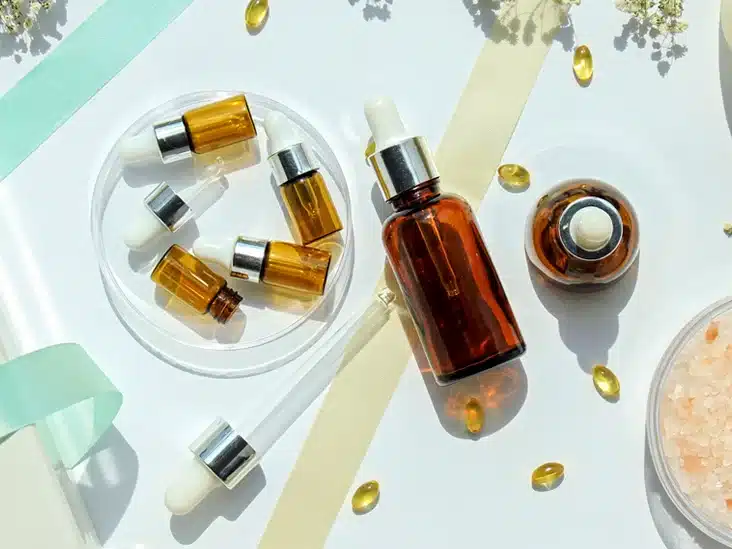It’s not a coincidence that certain ingredients are seemingly in all of your skincare products. While brands search high and low for new, innovative ingredients to problem-solve common skincare concerns, they also rely on a class of highly-researched, multipurpose ingredients that help make formulas as effective as possible.
One such ingredient is vitamin E. On top of its moisturizing, antioxidant, and protective benefits, it also helps stabilize other ingredients in formulas.
RELATED: How To Choose And Apply A Night Cream
We turned to two top dermatologists for a complete rundown of this versatile skincare ingredient, along with how to incorporate it into your skincare routine. Ahead, their expert tips on how to make the most out of using vitamin E on your skin.
What Is Vitamin E?
There are eight types of vitamin E, but alpha-tocopherol is the one humans can metabolize. While it’s found naturally in foods such as whole grains, sunflower seeds, and olive oil, it’s also produced synthetically.
On top of being extremely moisturizing, vitamin E is an antioxidant that effectively fights free radical damage. “Vitamin E (or tocopherol) is a powerful antioxidant which can help to protect our cells from free radical damage,” confirms Dr. Nicole Hayre, a board-certified dermatologist and founder of Cosmetic Dermatology Center in McLean, Virginia. “This damage can affect the cell walls, cellular proteins, and even the DNA of the cells.” Over time, this damage can manifest itself in uneven skin texture and discoloration.
The fat-soluble antioxidant can also help prevent skin cancer. “There is also some data to suggest that it has anti-tumor and photo-protective properties as well as wound healing and anti-discoloration benefits,” says Dr. Nava Greenfield of Schweiger Dermatology Group in New York City.
RELATED: Ways To Treat Hyperpigmentation
What Are the Side Effects of Vitamin E?
Another reason why brands love to use vitamin E is that it’s universal. With that in mind, Dr. Greenfield says that those who are concerned about sun damage, repairing, and discoloration will reap the most benefits from including the ingredient in their skincare routine.
While it’s safe for all skin types, it’s important to be aware of any allergies. “The ‘free-alcohol’ form of vitamin E is tocopherol and although it is a wonderful antioxidant, it can be irritating to the skin and cause allergies in some,” Dr. Hayre shares. “Tocopheryl acetate, an ‘ester’ of tocopherol, is a weaker antioxidant than tocopherol but very gentle and rarely causes skin reactions. Therefore, it is best to look for products that use tocopheryl acetate.”
RELATED: Best Homemade Scrubs For Oily Skin
How to Add Vitamin E to Your Skincare Routine
Both dermatologists confirm that vitamin E is safe to use daily, in your morning or nighttime skincare routine — or both. Here are a few tips for incorporating the ingredient into your personal regimen.
- Combine vitamin E with vitamin C: “Vitamin E can process or neutralize a free radical, but then it cannot neutralize another free radical that may come along,” Dr. Hayre says. “However, if vitamin C is also present, the two antioxidants can work together so that after the vitamin E ‘absorbs’ the free radical, it can then pass it on to the Vitamin C and is then able to ‘absorb’ another.
- Look for formulas with other hydrating ingredients: Dr. Greenfield says ingredients like hyaluronic acid or oils will aid with absorption and better penetrate the skin.
- Use vitamin E products before applying sunscreen: “It’s a great product to use in a serum or oil before moisturizer/sunscreen/makeup application,” Dr. Greenfield shares.

